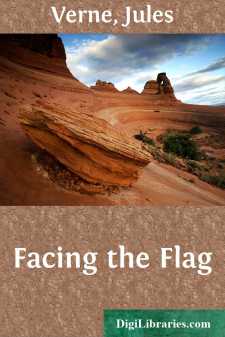Categories
- Antiques & Collectibles 13
- Architecture 36
- Art 48
- Bibles 22
- Biography & Autobiography 813
- Body, Mind & Spirit 138
- Business & Economics 28
- Children's Books 12
- Children's Fiction 9
- Computers 4
- Cooking 94
- Crafts & Hobbies 4
- Drama 346
- Education 46
- Family & Relationships 57
- Fiction 11821
- Games 19
- Gardening 17
- Health & Fitness 34
- History 1377
- House & Home 1
- Humor 147
- Juvenile Fiction 1873
- Juvenile Nonfiction 202
- Language Arts & Disciplines 88
- Law 16
- Literary Collections 686
- Literary Criticism 179
- Mathematics 13
- Medical 41
- Music 40
- Nature 179
- Non-Classifiable 1768
- Performing Arts 7
- Periodicals 1453
- Philosophy 64
- Photography 2
- Poetry 896
- Political Science 203
- Psychology 42
- Reference 154
- Religion 505
- Science 126
- Self-Help 81
- Social Science 81
- Sports & Recreation 34
- Study Aids 3
- Technology & Engineering 59
- Transportation 23
- Travel 463
- True Crime 29
The Master of the World
by: Jules Verne
Categories:
Description:
Excerpt
Chapter 1
If I speak of myself in this story, it is because I have been deeply involved in its startling events, events doubtless among the most extraordinary which this twentieth century will witness. Sometimes I even ask myself if all this has really happened, if its pictures dwell in truth in my memory, and not merely in my imagination. In my position as head inspector in the federal police department at Washington, urged on moreover by the desire, which has always been very strong in me, to investigate and understand everything which is mysterious, I naturally became much interested in these remarkable occurrences. And as I have been employed by the government in various important affairs and secret missions since I was a mere lad, it also happened very naturally that the head of my department placed In my charge this astonishing investigation, wherein I found myself wrestling with so many impenetrable mysteries.
In the remarkable passages of the recital, it is important that you should believe my word. For some of the facts I can bring no other testimony than my own. If you do not wish to believe me, so be it. I can scarce believe it all myself.
The strange occurrences began in the western part of our great American State of North Carolina. There, deep amid the Blueridge Mountains rises the crest called the Great Eyrie. Its huge rounded form is distinctly seen from the little town of Morganton on the Catawba River, and still more clearly as one approaches the mountains by way of the village of Pleasant Garden.
Why the name of Great Eyrie was originally given this mountain by the people of the surrounding region, I am not quite Sure It rises rocky and grim and inaccessible, and under certain atmospheric conditions has a peculiarly blue and distant effect. But the idea one would naturally get from the name is of a refuge for birds of prey, eagles condors, vultures; the home of vast numbers of the feathered tribes, wheeling and screaming above peaks beyond the reach of man. Now, the Great Eyrie did not seem particularly attractive to birds; on the contrary, the people of the neighborhood began to remark that on some days when birds approached its summit they mounted still further, circled high above the crest, and then flew swiftly away, troubling the air with harsh cries.
Why then the name Great Eyrie? Perhaps the mount might better have been called a crater, for in the center of those steep and rounded walls there might well be a huge deep basin. Perhaps there might even lie within their circuit a mountain lake, such as exists in other parts of the Appalachian mountain system, a lagoon fed by the rain and the winter snows.
In brief was not this the site of an ancient volcano, one which had slept through ages, but whose inner fires might yet reawake? Might not the Great Eyrie reproduce in its neighborhood the violence of Mount Krakatoa or the terrible disaster of Mont Pelee? If there were indeed a central lake, was there not danger that its waters, penetrating the strata beneath, would be turned to steam by the volcanic fires and tear their way forth in a tremendous explosion, deluging the fair plains of Carolina with an eruption such as that of 1902 in Martinique...?












